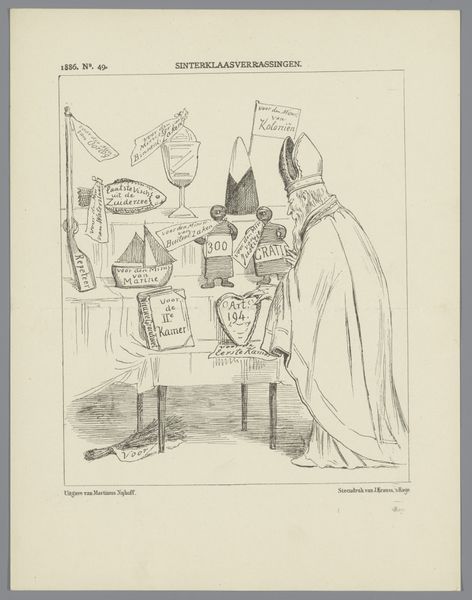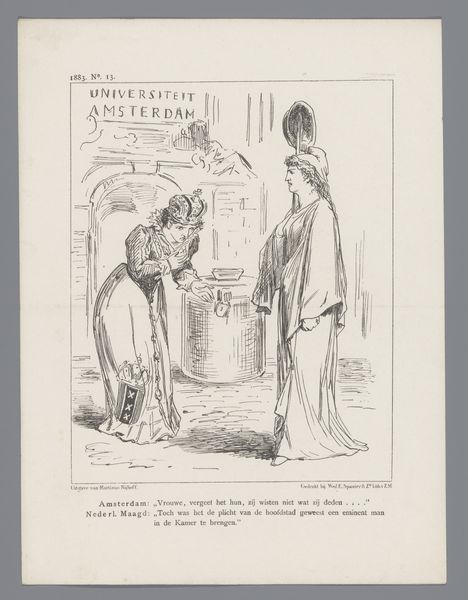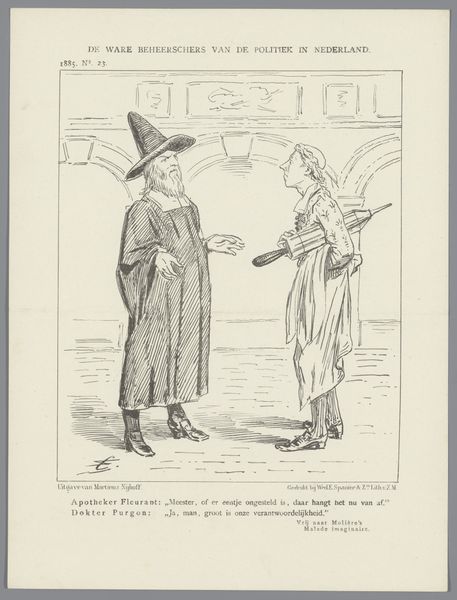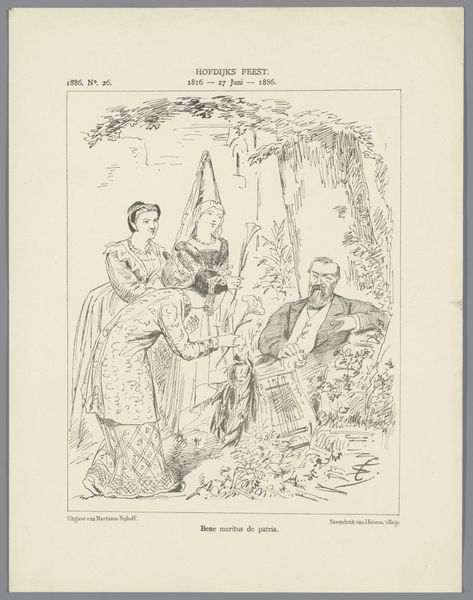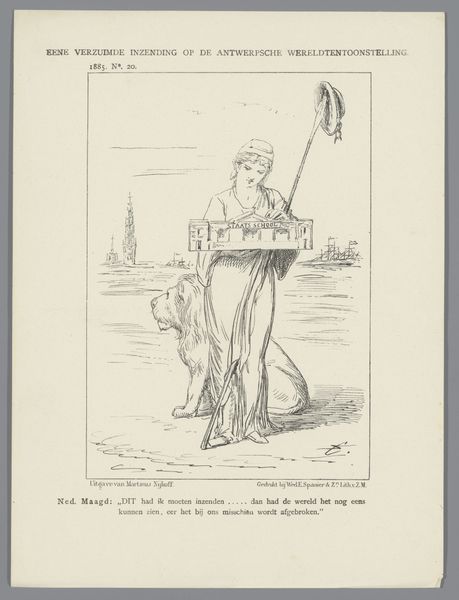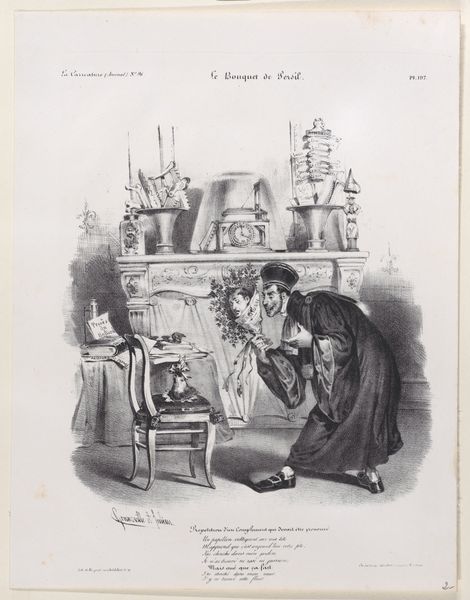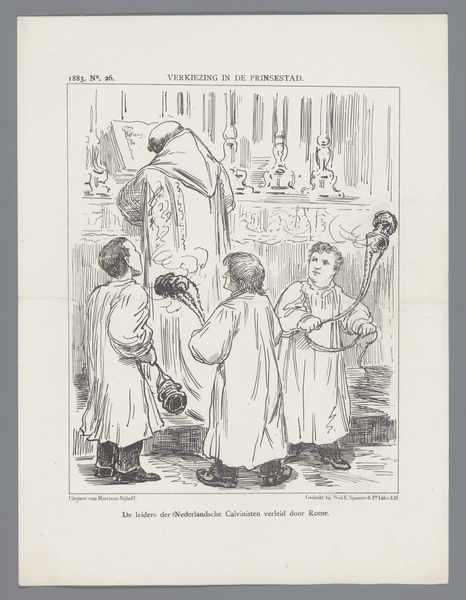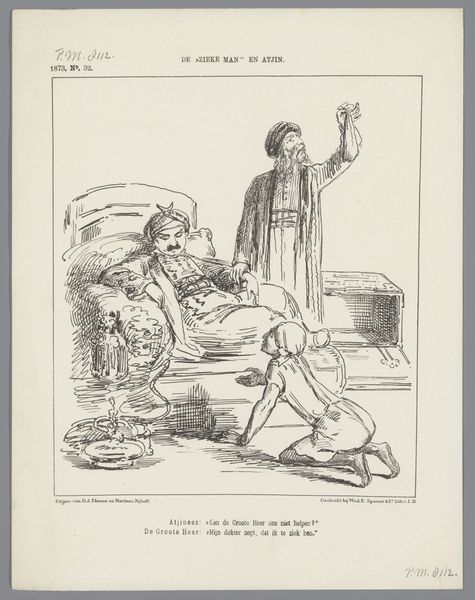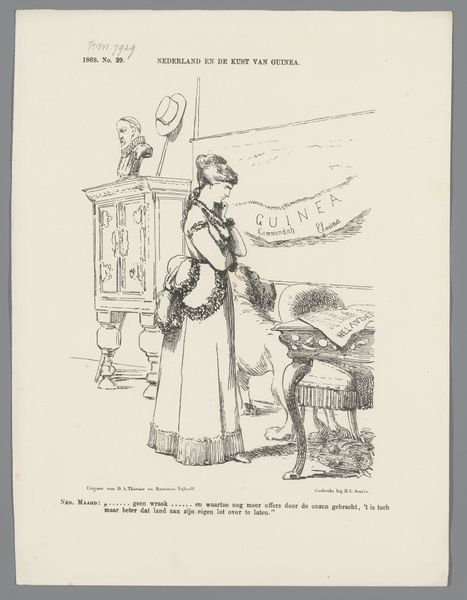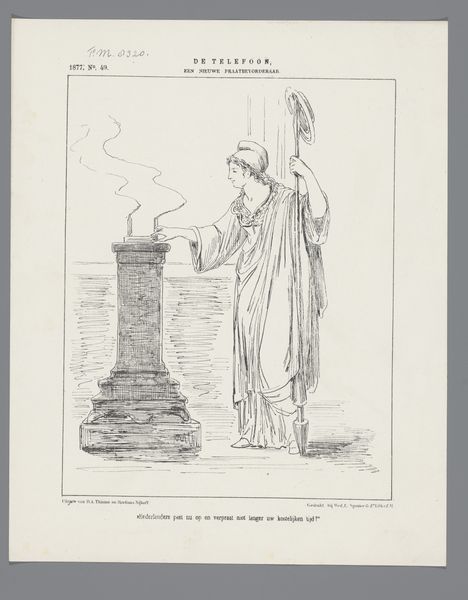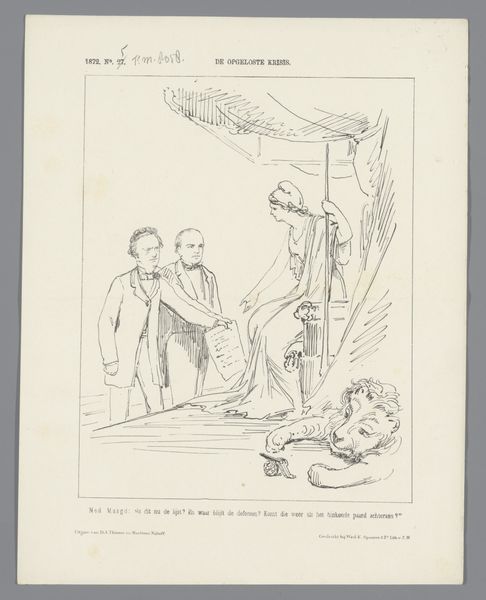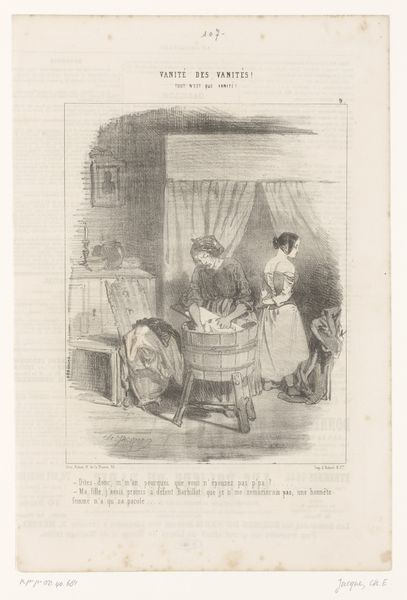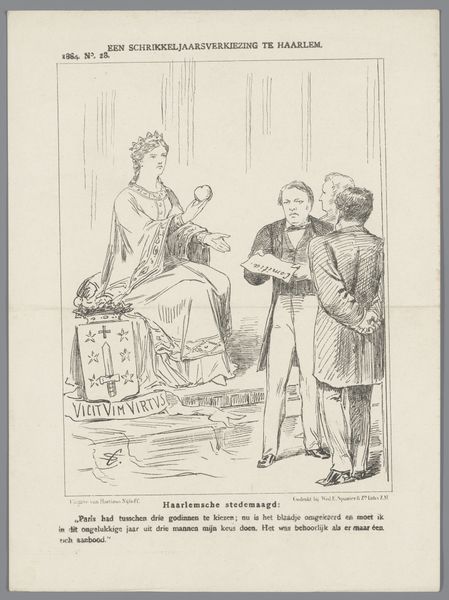
graphic-art, print, engraving
#
graphic-art
#
neoclassicism
# print
#
caricature
#
symbolism
#
engraving
Dimensions: height 275 mm, width 215 mm
Copyright: Rijks Museum: Open Domain
Curator: This print, titled "Spotprent bij de verkiezingen op 15 juni 1886," offers a rather stark symbolic composition, wouldn’t you agree? The engraving presents an allegorical scene of the Dutch elections in 1886. Editor: My first thought? What a powerfully contrasting image! The stark monochrome palette heightens the moral conflict immediately evident between the angelic and demonic figures. The etching possesses incredible intricacy. Curator: Absolutely. The process itself reflects the content: this is a printed image intended for mass consumption. It’s important to remember its historical context. The political climate in 1886 was tense. The debate about constitutional reform dominated the public sphere. This print, created by Johan Michaël Schmidt Crans, uses allegory to comment on these specific conditions. Editor: Formally, it is compelling how Crans uses contrasting light and shadow to delineate good from evil. The angel on the left emanates light, almost radiating purity, while the devil is mired in sharp, cross-hatched lines, suggesting darkness and perhaps deceit. Curator: Yes, and observe the material conditions symbolized within. The angel offers "Grondwetsherziening," which translates to constitutional reform; its a tangible offering. It signifies specific social policies circulating during this historical moment and, of course, it’s mass-produced, thus available for broad circulation through printing and publishing infrastructures. Editor: And note the symbolism inherent to each figure’s pose. The angel offers something openly, while the devil seems to claw at the vessel between them, as though scheming or attempting to subvert the angelic gesture of the time. It creates tension, which visually represents the broader social conflict of Dutch politics in that era. Curator: This print offers insight into how political ideas were visually produced, consumed, and debated within 19th-century Dutch society, by reflecting and responding to its precise means of creation. It's a valuable document in understanding historical materialism and printmaking as critical forces in society. Editor: The clean lines, and highly symbolic approach typical of the period’s neoclassicism create such compelling dialogue in what at first looks like a relatively simple engraving, yet one dense with potential interpretations.
Comments
No comments
Be the first to comment and join the conversation on the ultimate creative platform.
